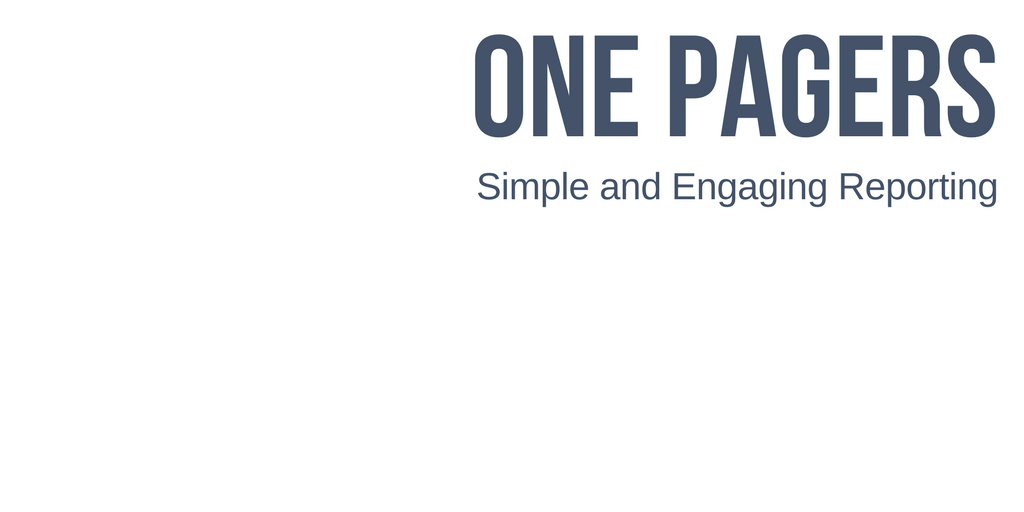
Traditional, long-form reports are often used to detail the depth and specifics of an evaluation. However, many readers simply don’t have the time or bandwidth to digest a 30-page report. Distilling the key information into one page can help catch the eye of busy program staff, college administrators, or policy makers.
When we say “one pager,” we mean a single-page document that summarizes evaluation data, findings, or recommendations. It’s generally a stand-alone document that supplements a longer report, dataset, or presentation.
One pagers are a great way to get your client the data they need to guide data-driven decisions. These summaries can work well as companion documents for long reports or as a highlight piece for an interim report. We created a 10-step process to help facilitate the creation of a one pager. Additional materials are available, including detailed slides, grid layouts, videos, and more.
Ten-step process for creating a one pager:
1. Identify the audience
Be specific about who you are talking to and their information priorities. The content and layout of the document should be tailored to meet the needs of this audience.
2. Identify the purpose
Write a purpose statement that identifies why you are creating the one pager. This will help you decide what information to include or to exclude.
3. Prioritize your information
Categorize the information most relevant to your audience. Then rank each category from highest to lowest priority to help inform layout of the document.
4. Choose a grid
Use a grid to intentionally organize elements visually for readers. Check out our free pre-made grids, which you can use for your own one pagers, and instructions on how to use them in PowerPoint (video).
5. Draft the layout
Print out your grid layout and sketch your design by hand. This will allow you to think creatively without technological barriers and will save you time.
6. Create an intentional visual path
Pay attention to how the reader’s eye moves around the page. Use elements like large numbers, ink density, and icons to guide the reader’s visual path. Keep in mind the page symmetry and need to balance visual density. For more tips, see Canva’s Design Elements and Principles.
7. Create a purposeful hierarchy
Use headings intentionally to help your readers navigate and identify the content.
8. Use white space
The brain subconsciously views content grouped together as a cohesive unit. Add white space to indicate that a new section is starting.
9. Get feedback
Run your designs by a colleague or client to help catch errors, note areas needing clarification, and ensure the document makes sense to others. You will likely need to go through a few rounds of feedback before the document is finalized.
10. Triple-check consistency
Triple-check, and possibly quadruple-check, for consistency of fonts, alignment, size, and colors. Style guides can be a useful way to keep track of consistency in and across documents. Take a look at EvaluATE’s style guide here.
The demand for one pagers is growing, and now you are equipped with the information you need to succeed in creating one. So, start creating your one pagers now!

Except where noted, all content on this website is licensed under a Creative Commons Attribution-NonCommercial-ShareAlike 4.0 International License.






 EvaluATE is supported by the National Science Foundation under grant numbers 0802245, 1204683, 1600992, and 1841783. Any opinions, findings, and conclusions or recommendations expressed on this site are those of the authors and do not necessarily reflect the views of the National Science Foundation.
EvaluATE is supported by the National Science Foundation under grant numbers 0802245, 1204683, 1600992, and 1841783. Any opinions, findings, and conclusions or recommendations expressed on this site are those of the authors and do not necessarily reflect the views of the National Science Foundation.